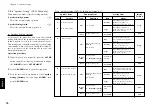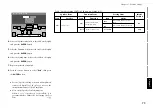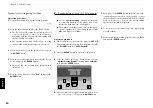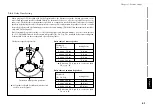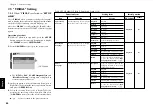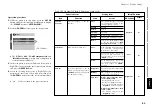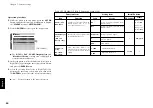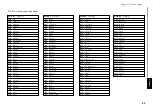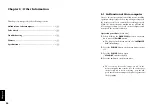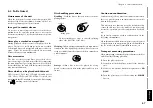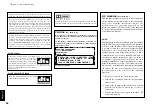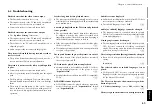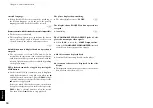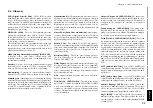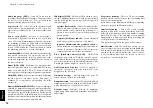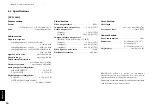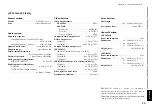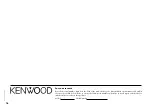
92
Chapter 8 : Other Information
Chapter 1
Chapter 2
Chapter 3
Chapter 4
Chapter 5
Chapter 6
Chapter 7
Chapter 8
Progressive scanning :
This is a TV screen scanning
method, which scans a screen in order of scanning lines
from the first scanning line.
It can reduce image flickering in still images containing
characters, graphics and horizontal lines.
Interlace scanning :
This is a TV screen scanning
method, which scans a screen by dividing it into two
fields. It begins scanning with the odd number scanning
lines then proceed to the scanning of even number
scanning lines to display a single image by making use
of the persistence of residual image.
This method is applied in the previous TV formats.
Multi Session :
With CD recording, a session refers to
an area composed of three recording areas including the
lead-in area (which indicates the location of data), data
area and lead-out (which indicates the end of session).
A CD containing more than one session in a disc is
referred to as a multi-session disc.
Audio language (DVD):
Some DVDs contain the
recording of multiple audio languages. This player allows
the user to select desired one of the recorded audio
languages during playback of such a DVD.
Aspect ratio :
The ratio between the horizontal and
vertical sizes of picture displayed on a TV screen. The
aspect ratio of ordinary TV is 4:3, and that of widescreen
TV is 16:9.
Pan & scan (DVD) :
Method of displaying a
horizontally-long picture recorded in 16:9 aspect ratio
on a 4:3 TV screen by trimming part of picture. In general,
the trimming positions for pan & scan are determined
uniformly by the reproducing device. However, the pan
& scan of DVD allows the software producer to specify
the trimming positions to be used in playback.
Letterbox (DVD) :
Method of displaying a horizontally-
long picture recorded in 16:9 aspect ratio on a 4:3 TV
screen by attaching bands at the top and bottom of the
screen and displaying the horizontally-long picture at
the center of screen.
Frame (DVD, VCD) :
Each frame of a moving picture,
that is displayed 30 times a second with NTSC and 25
times a second with PAL. These TV formats reproduce
moving pictures by displaying still pictures sequentially.
Field (DVD, VCD) :
Part of a frame obtained by dividing
the video data of each frame by two. Each frame of
ordinary TV is constitute by displaying the fields
alternately.
Frame still/Field still (DVD, VCD) :
Types of still pictures
obtained by temporarily stopping a moving picture. The
frame still picture may produce blur in the picture because
it displays two specific fields alternately, but the picture
quality is higher. The field still picture has lower picture
quality because it uses half the picture information of frame
still, but is not accompanies with picture blur.
IPB display (DVD) :
With the MPEG2 which is one of
the video display methods of DVD, each picture is divided
into the following three picture types before being coded
in digital signal.
I-picture (Intra coded) :
This is the standard video
and can constitute a picture by itself. As the highest
picture quality can be obtained, the still image of I-
picture is most suitable for use when adjusting the
picture quality.
P-picture (Predictive coded) :
Picture calculated
based on past pictures (I-picture or B-picture).
B-picture (Bidirectionally predictive coded) :
Picture calculated by comparing the previous and next
pictures (I-pictures or P-pictures). This picture type
contains least amount of video information.
P.B.C. (PlayBack Control) (VCD) :
VIDEO CDs
carrying messages such as "Playback Control Capable"
can be played interactively by selecting the desired play
position or information in hierarchical structures while
watching the menus displayed on the TV screen.
OSD (On-Screen Display) :
OSD is a method of
interactive operations using the menus and icons
displayed on the TV screen.
On-Screen Message :
Message displayed on the TV
screen when an operation is performed.
Downconversion :
Conversion of PCM signal with high
sampling rate such as 96 kHz and 192 kHz into a signal
with a sampling rate of 48 kHz or 44.1 kHz.
Dynamic range :
Difference between the minimum
reproducible audio signal and maximum reproducible
audio signal.

